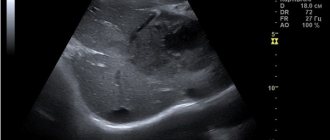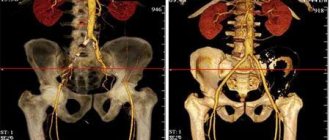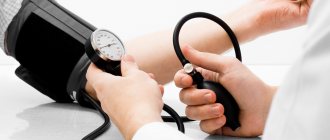Author Alexandra Balan-Senchuk
10/21/2019 15:06 (Updated: 08/13/2021 19:17)
Health
Spasticity is a condition associated with an involuntary increase in muscle tone, which results in resistance to normal body movements and can cause pain in some people.
muscle spasticity
The disease is closely associated with certain diseases of the central nervous system (CNS), such as multiple sclerosis and cerebral palsy, in addition to injury or tumor growth in the area.
What is spasticity in simple words?
In a normal state, the mechanism of muscle contraction and relaxation is brought to automaticity. All processes work flawlessly thanks to the coordinated work of the limbs, spinal cord and brain. But a stroke or injury leads to the death of cells that are responsible for transmitting signals to motor neurons in the spinal cord and brain. As a result, the inhibitory impulses do not reach the recipient - coordination is disrupted.
In other words, the muscles in the legs or arms have lost connection with the brain, but they continue to store energy. But this energy must be expended - this happens in the form of painful spasms. Since the muscles do not perceive direct commands from the brain, spasms can occur at any moment.
In children
Spasticity in children most often manifests itself after injuries and illnesses. At the first signs of such an illness, you should not waste time and begin treatment as soon as possible. Very often, spasticity in childhood occurs in children with disabilities, with cerebral palsy and various spinal injuries. In such cases, the treatment process is much more complicated. Spasticity in children usually consists of involuntary muscle contractions and spasms. It can appear for no reason. The signals sent by the brain are perceived by the muscles completely incorrectly, which causes their sudden contraction.
Spasticity: good or bad?
The mechanisms of the formation of spastic syndrome are still not well understood due to their complexity and versatility. Spasticity does not affect everyone. Both its presence and its absence have their pros and cons.
Spasticity keeps muscles toned and promotes good blood supply. Many doctors are very positive about spasticity - it means that the legs or arms can still be restored and the person can walk again. Even despite the pain, many patients are happy to perceive that their legs (or arms) “work,” albeit spontaneously. At least at the first stage of rehabilitation, the role of spasticity is clearly positive. But in the future, the strengthening of spastic syndrome leads to serious difficulties in recovery.
Cerebral palsy. Part three. Correction of spasticity
Authors : Anna Ostroverkhova
(Read the beginning of the publication about cerebral palsy here and here.)
In one of the previous materials, I already wrote about high muscle tone, massive overdiagnosis and cases when its correction is really required.
The main idea there is the following: increasing muscle tone is compensation for the lack of movement. If the brain cannot control a limb, then it turns it into a crutch. In this case, the question arises: is it necessary to combat high muscle tone at all, if its increase is initially intended to help the limbs perform their supporting function?
As it turned out, there really is not always a reason to fight an increase in tone. It happens that with a decrease in muscle tone, muscle weakness comes to the fore, and then the limb generally loses its supporting function.
This table summarizes the positive and negative effects of spasticity. As we can see, spasticity has different effects. There are, of course, more unfavorable ones, but we cannot ignore the favorable ones either. This means that we will decide on the need to correct muscle tone each time individually, carefully and thoughtfully examining the child, weighing all the pros and cons.
Before you start correcting muscle tone, you need to evaluate it as accurately and objectively as possible. Simply writing that the tone is high or low is not writing anything. There are special scales that allow you to express muscle tone in points.
Modified Eshourt scale
Modified Tardieu muscle tone scale
The range of motion in the joint is measured three times at different speeds:
- At the slowest pace (velocity V1), the passive range of motion (R2) is assessed.
- With speed V2, the amplitude of movement in the joint under the influence of gravity is assessed.
- The movement is performed at a fast pace (V3), the amplitude of movement R1 is assessed.
The greater the difference between R1 and R2, the greater the spasticity in the muscle that is stretched when performing a given movement. A difference in movement amplitudes of 30 degrees (measured with a goniometer) is a direct indication for botulinum therapy of the muscle being tested.
These scales are very important because... make it possible to decide on the advisability of changing tone, to observe changes in tone over time (before/after treatment), continuity between specialists is possible.
We will correct muscle tone in the following cases:
- Score on the modified Ashworth and Tardieu scales - from 3 points and above.
- Spasticity interferes with gait.
- Spasticity causes muscle pain.
- There is a high risk of contractures and subluxations/dislocations in the hip joints.
- Spasticity aggravates the patient's disability (makes it difficult for the patient to care for or self-care).
Spasticity can be corrected using the following methods:
- Oral medications.
Oral medications commonly used in children are baclofen, diazepam, clonazepam, dantrolene, and tizanidine.
These drugs have a central effect, which means they are non-selective. Their action extends to all muscle groups: both those with high tone and those with normal tone. That is, a decrease in tone will be accompanied by weakness even in healthy limbs. Also, due to their central action, muscle relaxants lead to sedation and a decrease in cognitive processes. Therefore, there are recommendations regarding the combination of these drugs to enhance the effect and reduce side effects.
Most of the studies on the effectiveness of these drugs are old and were not conducted according to the principles of evidence-based medicine. Therefore, to date, muscle relaxants are not included in current recommendations for the management of spasticity.
- Botulinum therapy.
Botulinum toxin therapy is an effective and safe method for the management of spasticity with level A evidence.
It must be remembered that a decrease in muscle tone in itself does not in any way affect the child’s acquisition of new skills, but purely technically it makes it possible to carry out high-quality physical rehabilitation.
- Intrathecal administration of baclofen.
Intraspinal canal baclofen was approved for the treatment of spasticity in 1996. A baclofen pump is a surgically implanted system used to control spasticity by injecting baclofen directly into the spinal canal and around the spinal cord. Since baclofen spreads throughout the entire length of the spinal canal, the tone decreases in all extremities, their supporting function disappears against the background of high weakness, therefore this type of tone reduction is suitable only for children who cannot move independently - to make it easier for parents to care for them, prevention of orthopedic complications and pain syndrome.
- Selective dorsal rhizotomy.
This neurosurgical operation is performed for severe spasticity.
Transection of a certain portion of the dorsal (sensitive) roots is most often performed at the lumbosacral level in spastic paralysis of the lower extremities with partial preservation of voluntary movements and a significant limiting role of spasticity in the implementation of these movements.
It is believed that this is an ideal method for managing spasticity in children with gross motor skill levels 4–5 on the GMFCS.
Good tone everyone!
Sincerely, neurologist Ostroverkhova A.M.
Source for more research links
published 20/11/2018 14:07 updated 20/11/2018 — Growth and development, Medicines, Treatment methods, Congenital and hereditary diseases, Nervous, mental and psychological diseases, Congenital and hereditary diseases, genetics, Neurology and psychiatry, Special children and their families, Families with a special child, Rare diseases
How not to trigger spasticity?
If in the first weeks of rehabilitation you take the necessary measures against increased spasticity, you can reduce possible negative consequences. At the very least, you will be able to achieve a state where you can move comfortably and live a normal life. To do this you need:
- Reduce time spent sitting. Of course, you need to sit, including to strengthen your back muscles. You just can’t spend too much time in a sitting position - this leads to contraction and tightening (and therefore loss of elasticity) of the inguinal and abdominal muscles and tendons.
- Lie with a cushion under your chest. The patient spent some time sitting, and now he needs to lie down, placing a cushion under his chest. A regular pillow will do. This is necessary to stretch the muscles after contraction. In addition, it will be useful to place a small load on the tailbone (up to 5-8 kg, selected individually). Additionally, you can place a cushion (or pillow) just above the knee.
- Do not lie on your side with your legs bent. Essentially the same harm as sitting. If this position is comfortable for the patient, then, of course, one cannot refuse it. You need to introduce yourself a mandatory rule: every time after this you need to lie on your stomach with a pillow or cushion under your chest.
- Do not pump up the muscles at the beginning of recovery. At the start of rehabilitation, you want to do as much as possible to speed up recovery. But this approach carries serious risks. Due to spasticity, the muscles are already clogged, and training only makes the situation worse. The path of inhibitory impulses to the addressee becomes even more difficult due to severe muscle congestion.
It is important to do massage with exercise therapy for cerebral palsy.
The most important condition for achieving positive results in the treatment of cerebral palsy in children is the addition of exercise therapy massage with physical therapy. Moreover, it is advisable to carry out massage with exercise therapy in one procedure. Why?
1. This is due to the fact that muscles, ligaments and tendons need to be prepared for physical therapy, i.e. warm up and knead.
2. No massage can replace movement. Even passive exercises performed by a massage therapist will have irreplaceable benefits on the child’s body. And if it is possible to achieve the appearance of active movements controlled by the child, this is a big victory. Massage with exercise therapy for cerebral palsy in children can be carried out sequentially, i.e. first a general massage, then exercises or perhaps stirring.
3. The benefits of therapeutic gymnastics are also in teaching a child active, controlled movements that fill our lives, but we do not think about them, but simply use them. When the parts of the brain that provide smoothness, continuity, accuracy, strength and, in general, the ability to move limbs and other parts of the body are disabled, then through gymnastics we try to stimulate the brain to create neural pathways bypassing the affected areas, sometimes this is successful.
Treatment methods
It will not be possible to completely get rid of spastic syndrome, but you can make sure that the spasms bother you as little as possible and do not interfere with your everyday life. There are several areas of treatment:
- Therapeutic physical education (physical therapy). In fact, it is the only truly effective method of combating spasticity that gives lasting results. You need to regularly perform a set of muscle stretching exercises: stretch your toes, do circular rotations with your feet, straighten and bend your legs in a sitting position, bend your torso, lift your legs one by one, bend your knees in a position on your stomach. For exercise therapy, you can and should use various auxiliary equipment: balls, benches, hand controls, various exercise machines and other useful devices.
- Surgical procedures. There is a temporary solution that surgeons can offer - tendon trimming. For a while, the spastic syndrome actually disappears, but then it returns and becomes even stronger. Do not rush to agree to this operation until you weigh the pros and cons.
- Pills or injections. Medications can calm painful cramps. But the duration of action of drugs usually does not exceed 2-3 hours, and after prolonged use the drugs will become completely ineffective. In addition, due to medications, spastic manifestations can become stronger and more intense.
Exercise therapy and lying on your stomach with a pillow under your chest are the simplest and at the same time the most effective means against increasing spasticity. This treatment has no side effects or risks. In addition, if a person with a disability buys technical means of rehabilitation himself, then he can receive compensation from the state for their cost through social services. For more detailed information, please contact our consultants.
Diagnosis of muscle spasticity
The diagnosis of spasticity involves a thorough medical history and examination, with particular emphasis on potential causes of symptoms, in order to make an appropriate diagnosis and make recommendations for treatment. Important factors to consider include any traumatic events that may have affected the central nervous system, changes in medications, noxious stimuli, and changes in intracranial pressure.
In addition, electromyography provides valuable information about nerve conduction velocity, and magnetic resonance imaging (MRI) helps visualize the causative damage in the central nervous system.
The severity of the condition can be classified according to a clinical scale such as the Ashworth scale, physician rating scale or spasm scale.
Is it possible to teach massage to parents with cerebral palsy?
It is possible to learn some basic techniques of massage and gymnastics, but it is better for parents to use them between courses, as homework. It will, of course, be more effective to work with a specialist, and the parents’ task is to maintain joint mobility and muscle stretching until the next course of massage, to the extent they can. This approach saves time on the next massage course. Those. The massage therapist no longer spends several sessions trying to return the muscles to their previous state in which they were left on the previous course.
What kind of massage is given to children for cerebral palsy?
The main type of massage is classic; acupressure is also added. The procedure is carried out in a differentiated manner, taking into account the individual characteristics of the child, the form and severity of the disease.
Vojta therapy is often prescribed to children with cerebral palsy; it is a harsh method and is not suitable for everyone. Children scream a lot during this therapy; in general, the method is based on the principle of irritation, which not every child can do. For example, if there are parallel diagnoses such as epilepsy, then I would recommend coordinating the use of Voight therapy with “ten” neurologists before doing it.
Hand massage for children with cerebral palsy.
Hand massage for a child with cerebral palsy is carried out according to the same principle as massage of the lower extremities. Relaxing massage of spastic muscles is usually the flexors of the forearm, hand, fingers, adductors of the arm, pronator of the hand and forearm. A relaxing hand massage begins from the upper sections, i.e. adductors, pectoralis major muscle, latissimus dorsi muscle and their synergists. We apply passive movements in the shoulder joint to the warmed and stretched muscles to stretch the muscles. Next, we stretch the biceps on the shoulder and tone the triceps, and continue passive extension at the elbow joint. We massage the forearm taking into account the tone and make passive movements in the LZS and it is important not to forget about the pronators, after the massage we stretch them with supination, also passive. If the fingers are in a fist, then we massage the hand and stretch the finger flexors by extending the wrist joint with the fingers previously unclenched and fixed.
What treatment for cerebral palsy in a child can parents carry out on their own?
From independent actions, we see from practice that parents can master a little massage, elements of exercise therapy, from physio-paraffin, ozokerite, also styling, elements of Vojta therapy, putting on splints, putting them on a verticalizer, and doing classes from a speech therapist-defectologist. Of course, this is not all at a professional level, but such a set of actions is no longer small.
Is it possible to cure cerebral palsy in a child with massage?
Practice shows that massage with all the “additives” gives a good effect to children in the treatment of mild degrees, and not all forms. A complete cure, of course, will not come in any degree or form. Therefore, advice to parents is not to be heartbroken, not to sell everything you have and spend it on all methods of treatment, even to popular charlatans. So far, not even a single ultra-modern center has cured a child from cerebral palsy. You can achieve good results in rehabilitation, but cerebral palsy cannot be completely cured. Even if it is not treated, you should not give up, massage and gymnastics should be done, because the child is growing, you need to try to maintain mobility of the joints.
The age of the child plays an important role in rehabilitation; while the child is small, he may have problems with motivation due to the fact that he tries many times to do some movement, but nothing works. The older the baby, the more conscious the fight against the disease for the right to move, albeit clumsily, becomes. For this, you need to maintain the child’s body in a state of readiness of muscles and joints for movement.
Our center’s specialists provide massages for children with cerebral palsy at home in Moscow. If you want to find a qualified and experienced massage therapist for your child, call +79266057470.
Spasticity and spasms
Spasticity is often accompanied by the presence of spasms, which manifest themselves in involuntary contraction of one or a group of muscles. In some cases, spasms are accompanied by pain of varying intensity.
The occurrence of spasms can occur either as a result of exposure to any irritant or independently.
Spasticity can be mild or severe. In the first case, this condition is not a serious obstacle for the patient, and he is able to lead a normal life, whereas in severe cases the person is forced to move around in a wheelchair.
It should be noted that the severity of a condition such as muscle spasticity may change over time.
But there are cases of positive effects of spasticity. For example, patients with paresis (weakness) in the legs have the ability to stand independently precisely due to muscle spasm.











